
Greiner, CEO of DailyPay


Greiner, CEO of DailyPay

Data Facts is the perfect size to provide big-company technology and small company attention. We o er the latest solutions, a wide selection of integrations, and intuitive processes, but are still small enough to personally get to know your team and understand your business needs. As a PBSA-accredited and 100% women-owned company, we are perfectly positioned to give you the personalized support and attention you deserve, with the added benefit of being a diversified supplier. Choose Data Facts for a win-win: the latest technology AND the best client support in the industry.








SHRM transforms workplaces for the better, making them more e cient, insightful, and resilient. Find all the resources you need to become a leader in HR.
SHRM transforms workplaces for the better, making them more e cient, insightful, and resilient. Find all the resources you need to become a leader in HR.













Receive guidance and authentic HR-related insights by consulting an expert SHRM HR Knowledge Advisor via email, phone, or chat.
Receive guidance and authentic HR-related insights by consulting an expert SHRM HR Knowledge Advisor via email, phone, or chat.
SHRM members receive 15 inquiries per year.
SHRM members receive 15 inquiries per year.
SHRM members save up to 40% o exclusive educational programs that you can only find through the SHRMStore. Earn professional development credits and find solutions to everyday HR challenges.
SHRM members save up to 40% o exclusive educational programs that you can only find through the SHRMStore. Earn professional development credits and find solutions to everyday HR challenges.
Real-time updates allow you to navigate the complexities and important changes in workplace compliance at the federal, state, and local levels to protect your organization.
Real-time updates allow you to navigate the complexities and important changes in workplace compliance at the federal, state, and local levels to protect your organization.
More than 340,000 members trust SHRM to solve HR problems before they start. Make a di erence in your career by keeping your membership active year after year.
More than 340,000 members trust SHRM to solve HR problems before they start. Make a di erence in your career by keeping your membership active year after year.
every SHRM membership
waiting for you at







2025 HR Florida Conference & Expo in Orlando August 24-27
24 WTSHRM 16th Annual HR & Employment Law Spring Conference in Jackson May 13 29 ALSHRM Conference at Perdido Beach Resort May 12-14 34 Save the Date for Disrupt HR in Memphis June 3 36 2025 South Carolina SHRM Conference in Myrtle Beach September 24-26
May 13, 2025 Tuesday 8:00 a.m. to 4:30 p.m. at Grant Event Center Union University 1050 Union University Dr. Jackson, TN 38305
37 41st Annual KYSHRM Conference in Lexington August 26-28
Natalie Loeb
Kisha Moliere
Clifford C. Sandsmark Hunter Yoches
Contact HR Professionals Magazine:
To submit a letter to the editor, suggest an idea for an article, notify us of a special event, promotion, announcement, new product or service, or obtain information on becoming a contributor, visit our website at www.hrprofessionalsmagazine.com. We do not accept unsolicited manuscripts or articles. All manuscripts and photos must be submitted by email to Cynthia@hrprosmagazine.com. Editorial content does not necessarily reflect the opinions of the publisher, nor can the publisher be held responsible for errors.
HR Professionals Magazine is published every month, 12 times a year by the Thompson HR Firm, LLC. Reproduction of any photographs,
LAW Join us for topics, including: Effective Employee date and compliant presentation effective. We policy revision Intro to Wage FMLA/Attendance Effective Employee Hiring Anti-Harassment Effective Employee Social Privacy Discipline termination) HR Legal cases and the Employment key legal standards include an Lunch is provided. Explore our showcase
38 Mississippi SHRM Conference in Biloxi September 8-10 39 The HRSouthwest Conference in Dallas October 12-14

40 SHRM25 in San Diego June 29 – July 2 Deadline to reserve space April 15

for WTSHRM $200 for non-WTSHRM Join WTSHRM for only
April presents a wonderful opportunity to engage with peers through the spring SHRM conferences. The ARSHRM ELLA Conference in Little Rock will be held on April 10-11 Concurrently, the Louisiana SHRM State Conference will take place in Baton Rouge on April 10-11. Additionally, we will convene in Memphis on April 22 for the SHRM-Memphis Legal Conference. I will be conducting Facebook “live” interviews from these events. Please follow us on Facebook at HRProfessionalsMagazine.com for notifications of these live sessions. The videos will also be available on LinkedIn.
Our focus this issue is payroll and HR technology. We are honored to feature Stacy Greiner, CEO of DailyPay on our April cover. DailyPay is one of the most innovative payroll companies in the US when it comes to HR technology. They are one of the first payroll companies in the country to provide daily pay for employees, helping businesses to enhance their retention rates for hourly employees. Stacy was previously COO at DailyPay where she was responsible for driving scaled growth for the company and expanding offerings for both employer clients and their employees. Read about Stacy’s exciting career on Page 6.
We are excited to share the highlights from the March 2025 HR Conference Cruise to Cozymel and the Bahamas aboard the Royal Caribbean “Voyager of the Seas.” A detailed recap of this “floating” conference can be found on Pages 10-11. In our March issue, we had the pleasure of featuring Mike Medoro, creator of the HR Conference Cruise℠. We are delighted to serve as the official media sponsor for the HR Conference Cruises. Congratulations to Mike on achieving a significant increase in attendance this year! We extend special thanks to the SHRM State Councils of Florida, New York State, and Ohio for sponsoring this event.
Please mark your calendars for the 2026 HR Conference Cruises taking place from March 7-12 and March 16-21, departing from Port Canaveral in Orlando, FL. Early bird registration is available until May 31, 2025, at the rate of $699. For more details and registration information, please visit www.HRCruise.com.
We continue to value our Thursday webinars that offer SHRM and HRCI Business credits. We hope you find them beneficial. This April, we have scheduled three complimentary webinars addressing key topics for HR professionals. We extend our gratitude to Data Facts, Sholder, and The Benefits Group for sponsoring our April webinars. Please check your email for invitations to these events.
My webinar sponsored by Data Facts will be held on April 24 at 2 PM CT/3 PM ET. Please mark your calendar and join us. As always, this webinar has been pre-approved for 1 SHRM PDC and 1 HRCI Business credit. If you are not currently receiving invitations, we encourage you to subscribe to our digital edition through our website.
happy spring!
happy spring!




Stacy Greiner serves as CEO of DailyPay, a leading worktech company. Under her leadership, the DailyPay team is dedicated to providing a world-class experience for its clients, partners, and customers with its platform featuring the industry-leading earned wage access solution.
Prior to her role as CEO, Greiner served as COO for DailyPay, where she was responsible for driving scaled growth for the company and expanding offerings for both employer clients and their employees. Greiner has a long track record of building high-growth new businesses in Fortune 100, midsize, and startup technology companies.
Before joining DailyPay in 2022, she served as the general manager of the Sales and Marketing Solutions Division of Dun & Bradstreet, owning the P&L and reigniting growth of the division. Her experience includes senior executive roles at Cisco and IBM where she led globally diverse product, marketing, data and analytics organizations.
Her passion for innovation was formed from her early years in Silicon Valley as a software engineer in Accenture’s Center for Strategic Technology and start-ups. Trained as an aerospace engineer at Iowa State University, Greiner also holds an MBA from MIT’s Sloan School of Management.
She serves on the board of Proto Labs, Inc., where she serves as a member of the audit committee.

















1 Mike Medoro, SHRM-SCP, President of Aspect Marketing and Communications, Inc., is the creator of the HR Conference Cruise℠, welcomed attendees to the 14th Conference Cruise. “The HR Conference Cruise℠ is truly a “LIFEWORK balance” with the emphasis on “LIFE!” 2 Misty Bolt with MedicareMisty.com was a sponsor for the Monday opening speaker, Matt Zinman. 3 Matt Zinman, author of “Z-isms: Insights to Live By,” was the opening night keynote speaker. 4 Corporate Traditions sponsored Jason Lawson’s presentation, “Reimagining HR.” 5 David Keller, VP Client Services with Rapid Hire Solutions. Spoke on “Navigating Compliance, Criminal Records, and Industry Trends. 6 UKG sponsored Dr. Liz Lance’s presentation. (L-R) George Rogers, Alena Roth, and Chas Fields







7 Dr. Liz Lance, SPHR, PMP, author, spoke on “Stop Surviving Change: Start Navigating,” sponsored by UKG. 8 George Rogers with UKG, one of the sponsors. 9 (L-R) Cynthia Thompson with HR Professionals Magazine, Dr. Kathy Tuberville, who spoke on “Women in Leadership – What’s in it for Men?” Dr. Deneen Lester, and Mike Medoro. The ladies are from Memphis, TN, are members of SHRM-Memphis. 10 Sponsor dinner hosted by Mike Medoro at Giovanni’s Restaurant on the ship. 11 Additional sponsors attending at Giovanni’s Restaurant. 12 (L-R) Lisa Wojtkowiak with the Ohio State Council and Jill Kopanis, our “Cruise Diva.” 13 Cathy Missildine, spoke on “HR Metrics That Matter.”






State Director
Dustin Paschal


Assistant State Director
District Directors
Staci Benavides

State Director - Elect
Mike Coffey

Rose Ann Garza
Secretary/ Treasurer
Edie Harvey


Brian Hayes
Michelle Friesenhahn Past State Director

District 1
Lauren Truelove


District 2
Dorothy Buffington Assistant State Director Professional Development

Bruce Waller

District 3
Lauren Pearce Assistant
District 4
Jessica Howell

District 1: Dallas HR, East Texas, Rose City, Southeast Texas, Texoma HR, Tri-State SHRM
District 5
Pamela Carroll
District 2: Cross Timbers, Heart of Texas, Fort Worth HR, Mid-Cities HRA, North Texas SHRM, Wichita Falls
District 3: Austin SHRM, Brazos Valley SHRM, Central Texas, HR Houston, Montgomery County, Texas Bay Area, Wilco HR
District 4: Big Country SHRM, El Paso, Lubbock, Mid-Tex, Panhandle, Permian Basin
District 5: Coastal Bend, Hill Country, Lower Valley, Rio Grande Valley, San Antonio, South Texas







Certification
Lisa Blanton


Global Business
Mya Kelly

Holly Novak
Legal and
Jennifer Davis

Legal
Sarah Glaser LeadHRs
Billie
Membership
Claudia Camacho SHRM
Kathryn Perez Communications



Davani






Legal
Kathy
Valeria

I m p a c t o f C u t s t o T h e
S o c i a l S e c u r i t y A d m i n i s t r a t i o n
The White House and Department of Government Efficiency have proposed substantial (12 2%) cuts to the staff at the Social Security Administration (SSA) Most observers believe the cuts will inevitably have some consequences for current retirees but even more so for new applicants for retirement benefits, disability insurance (SSDI) and supplemental security income (SSI) These cuts come at a time when staffing at SSA is at a fifty year low even as the number of beneficiaries has grown to nearly 73 million Americans and wait times for appointments at SSA offices has increased 150% even before these cuts are implemented
The restructuring will have important impacts on your workforce, their career planning and your staffing management. While this will most impact those nearing retirement age, it will also (and maybe more profoundly) effect the members of your team who may make claims for SSDI and SSI Wait times for disability claims are expected to be 240 days (up from 120 days in 2019) Tracking and updating lifetime earnings, which are crucial for benefit determinations, may encounter additional delays, complicating the process of correcting inaccuracies Enrollment in Medicare could take longer, and claims for SSDI and SSI might also face further holdups
The reduction in force is not the only change proposed SSA is set to close 6 of its 10 regional offices Analysts believe this will most dramatically increase wait times and benefit delays for people living outside urban centers according to Senator Ron Wyden (OR)
Changes within the SSA, can create uncertainty for the public, particularly for those relying on timely processing of benefits, eligibility evaluations, and customer service support For companies, workforce planning for employees may grow increasingly complicated as anticipated retirement dates may become less predictable, potentially disrupting new hiring efforts Transferring employees from your self-insured plan to Medicare may experience delays, leading to higher costs for your health plan This situation will similarly affect employees qualifying for SSDI, ESRD, and SSI The uncertainty surrounding these benefit determinations will generate stress for them, significantly impacting productivity Companies can expect to play a crucial role in supporting and guiding the workforce through these decisions.
FEDlogic is a dedicated company that understands these changes and can help interpret their implications, enabling your employees to make informed choices With experienced staff counselors who are former Social Security Administration experts, FEDlogic offers clarity, guidance, and advocacy With over 500 clients nationwide, FEDlogic is well positioned to comprehend how best practices in Human Resource Management are evolving to address these changes and incorporate new workforce forecasting models FEDlogic doesn’t merely track program changes; they develop strategies and approaches to help you navigate these emerging challenges for the benefit of your company, HR team, and workforce
Reach out to FEDlogic today to discover how federal and state benefit navigation can support your employees
How FEDlogic Helps Employers, HR, & Employees Navigate Federal & State Benefits
FEDlogic bridges the gap between employees and the complex world of federal and state healthcare programs and benefits By providing expert advocacy and education, we help employees discover alternative healthcare options that offer comprehensive coverage at lower costs This service is particularly valuable for employees navigating significant health crises or life changes times when understanding and accessing benefits can be overwhelming


For over a decade, FEDlogic has empowered families to make informed decisions about their healthcare By uncovering federal and state benefit programs, we ’ ve helped one-third of the families we serve transition to more cost-effective options These efforts not only alleviate financial stress for employees but also deliver substantial savings for self-insured employers.
Proven ROI: On average, FEDlogic achieves a return on investment (ROI) of 7:1, with results ranging from 2:1 to 13:1.
Life-Changing Results: Families facing terminal illnesses, premature births, disabilities, or COBRA transitions have benefited from our expert guidance, finding stability and relief during difficult times
r t s
A l l F E D l o g i c e x p e r t s h a v e y e a r s o f f e d e r a l
a n d s t a t e b e n e f i t s e xp e r i e n c e t o s h a r e
u n p a r a l l e l e d p r a c t i c a l g u i d a n c e a n d
i n s i g h t
F r e e , C o n f i d e n t i a l , a n d U n l i m i t e d
P h o n e - b a s e d c o n s u l t a t i o n s t h a t a r e
u n l i m i t e d , c o n f i d e n t i a l , a n d f r e e t o y o u r
e m p l o y e e s a n d t h e i r h o u s e h o l d m e m b e r s
N o t h i n g t o S e l l
F E D l o g i c w i l l n e v e r s e l l , e n d o r s e , o r
p r o m o t e p r o d u c t s o r s e r v i c e s O u r p r o m i s e
i s t o o n l y p r o v i d e u n b i a s e d e d u c a t i o n a n d
s u p p o r t
Empowering Employees. Supporting HR. Driving Resu
p r o p o s a l @ f e d l o g i c g r o u p . c o m
w w w f e d l o g i c g r o u p c o m
3 3 6 - 2 8 3 - 2 0 8 0


In2024, leadership coaching continued to solidify its role as a critical component of organizational success. As global economies adapt to shifting market dynamics, technological advancements, and the rise of hybrid work environments, leadership coaching has become indispensable in fostering adaptive, emotionally intelligent, and resilient leaders. In fact, according to Google Trends, there were over 1.5 million online searches each month in 2024 by people seeking management or executive coaching services. According to a recent ICF study, 99% of people who received coaching services reported being satisfied or highly satisfied. Research conducted by some of the country’s top consulting firms found that the ROI of a coaching engagement can exceed 500x the initial investment.
Loeb Leadership’s own coaching study identified several top coaching topics that are likely to carry into 2025. They are:
1. Coaching and Developing People (People Leadership) — Focusing on the development of others by recognizing strengths, providing regular constructive feedback, and providing developmental opportunities, balancing the immediate needs of individuals with opportunities for growth.
2. Self-awareness (Self-management) — Demonstrating an awareness of one›s emotions, behaviors, biases, habits, strengths and weaknesses.
3. Relationship Building — Developing relationships based on trust, mutual respect and common goals.
Personalization Through Technology
Artificial intelligence is driving personalization in leadership coaching. Tools like chatbots, virtual coaching platforms, and AI-driven assessments provide real-time feedback, tailored learning paths, and progress tracking. Loeb Leadership coaches use a platform called Optify to engage confidentially with their coachees. The platform allows the coach to provide just-in-time assignments to help the coachee build skills.
The platform also uses AI to help match coachees with coaches; providing an initial suggestion as to whom may be a good match for the coachee. The Loeb Leadership Client Managers add extra personalization to be sure the coachee is happily matched with the ideal coach.
Emotional intelligence emerged as a top priority, with coaches emphasizing self-awareness, empathy, and interpersonal skills as essential traits for effective leadership. With heightened emotional intelligence, leaders can make intentional choices on how to communicate, set expectations, provide feedback, and encourage performance in a way that will resonate best with each employee. One style does not fit all in today’s generationally diverse workforce. People come to the workplace with a variety of lived experiences. It is a leader’s role to know how to nurture, grow, and ignite performance in others.
The rise of remote work has popularized virtual coaching platforms, offering flexibility and accessibility. With online communication platforms such as Zoom, Teams, and Webex, there is no longer a need for coaches and coachees to meet in person for every session. This new remote coaching model opened opportunities for coachees to work with a coach who was in a different geographical location, further diversifying the pool of potential coaches for our clients.
BY NATALIE LOEB
Leadership coaching continues to play a pivotal role in promoting inclusion & diversity by helping leaders identify and address unconscious biases, foster inclusive cultures, and drive equitable decision-making. Coaching is an effective way to provide leaders with a safe, confidential channel to talk through their biases and think of ways to mitigate them. Specialized Inclusion coaching programs are on the rise, targeting leadership behaviors that align with an organization’s Inclusion goals.
Organizations are extending coaching programs to middle managers, recognizing their role as critical conduits between executives and employees. Many of Loeb Leadership’s development programs are a combination of skill transfer and one-to-one coaching. Each participant is assigned a coach so they can have individual time reflecting on and practicing the skills being learned in the leadership programming. In their confidential coaching sessions, the coachee can be honest and vulnerable with the struggles they are experiencing as well as sharing successes. Middle management coaching focuses on skills and competencies such as change management, giving feedback, delegation, holding others accountable, championing performance, and team motivation.
Some organizations find it challenging to scale personalized coaching across large teams, often due to resource limitations that hinder widespread adoption. At Loeb Leadership, we pride ourselves on our creative approach, ensuring organizations can offer coaching to those who will gain the greatest benefit and deliver the most value. This targeted strategy not only drives positive organizational impact but also provides a competitive advantage in the talent market.
Despite advancements, quantifying the long-term impact of leadership coaching on organizational performance and culture remains complex. Effective impact measurement requires the identification of individual performance metrics that will need to be assessed before, during, and after the coaching engagement. Loeb Leadership can advise an organization on the type of data to collect and how to analyze it to measure the impact of leadership coaching.
The rapid growth of the coaching industry has led to varying levels of coaching expertise and inconsistent credentialing standards. The International Coaching Federation (ICF) has made headway in creating competencies for coaches as well as setting standards for accrediting coach training programs. Loeb Leadership painstakingly selects coaches who have completed accredited coach training programs with at least 150 hours of direct coaching.
While technology enhances scalability and accessibility, it may sometimes compromise the depth of human connection central to effective coaching. At Loeb Leadership we completely support the advancement of technology and AI. We also know that a human connection is required for effective coaching. People change when the pain of staying the same is worse than the pain of changing. Human beings embrace change best when they know they are supported, allowed to make mistakes and to learn from those mistakes. Human beings feeling connected to their own growth will make growth happen. Coaches have the magic to help others discover how to connect to their own talents.
Integrating AI into coaching can enhance self-assessment tools, improve precision in feedback, and foster personalized growth trajectories. AI within coaching can revolutionize the way individuals assess themselves and receive feedback. By leveraging AI, coaches can create more accurate self-assessment tools that help clients identify their strengths and areas for improvement. Furthermore, AI can analyze performance data to provide precise feedback tailored to everyone’s needs, promoting more effective coaching. Finally, AI can help develop personalized growth trajectories, ensuring that each client follows a unique path that aligns with their specific goals and challenges.
Integrating AI into coaching not only improves the efficiency of the coaching process but also enhances the overall experience for clients. With advanced algorithms, AI can analyze data from various sources, such as performance metrics, self-reported assessments, and even biometric data, to deliver real-time insights. This datadriven approach allows coaches to provide more nuanced feedback, helping clients understand their progress and adjust their strategies accordingly. Moreover, AI can help identify patterns in a client’s behavior, which can lead to more targeted interventions and support. As a result, clients may experience faster growth and development in their personal and professional lives. With items such as Apple watches and Oura rings, clients are already receiving data that can inform their choices about how and why to manage stress. Sophisticated leaders use this data to inform their intentional behaviors and make changes healthier for themselves and those around them. At a minimum, deep breathing will help to slow down.
Forward-thinking organizations are embedding coaching into their culture, promoting a “coach-like” approach among leaders at all levels. Executive coaching skills are unique skills that leaders can be taught to strengthen their leadership capacity. Leaders who internalize and demonstrate executive coaching skills foster development and build high trust work teams. As a result, these teams achieve unexpectedly superior results focusing on the overall goals of the organizations rather than individual agendas.
There is a growing demand for leadership coaching in emerging markets, driven by rapid economic growth and evolving leadership paradigms. The increasing demand for leadership coaching in emerging markets is indeed a notable trend. As economies grow, there is a corresponding need for effective leadership to navigate the complexities and challenges that arise. New leadership paradigms, influenced by globalization and technological advancements, require leaders to adapt quickly and develop new skills. Coaching can provide the necessary support for emerging leaders to enhance their capabilities, foster innovation, and drive organizational success. Additionally, this demand is often accompanied by a desire for culturally relevant coaching approaches that resonate with local contexts and challenges.
To learn more about how our coaching can increase a leader’s effectiveness and impact, read some of our case studies by clicking here
As we move further into 2025, leadership coaching continues to evolve, driven by technological advancements and shifting workplace dynamics and focuses. Organizations that embrace coaching as a strategic tool—not just for executives but across all levels of leadership—will be better positioned to navigate complexity, foster resilient cultures, and achieve sustained success.
At Loeb Leadership, we are committed to helping organizations unlock the full potential of their leaders. Through personalized coaching, innovative technology, and a deep understanding of human connection, we empower leaders to grow, adapt, and make a lasting impact. The future of leadership coaching is bright, and with the right approach, its benefits can ripple throughout entire organizations, shaping not just stronger leaders, but healthier, more engaged workplaces.
Natalie Loeb, MS, Founder & Co-CEO of natalieloeb@loebleadership.com www.loebleadership.com


By STACY GREINER, CEO, DAILYPAY
I was fortunate enough to learn the value of an honest day’s work from my immigrant parents. Each morning, they would get up early to run our family grocery store in Omaha, Nebraska, always prioritizing putting the customers first.
There are over 168 million working Americans in businesses large and small across the country. Like my parents, so many are putting in an honest day’s work in their personal journey in achieving the American dream. A Pew study last year showed that a majority (53%) of Americans still believe in this dream. I am proud to say I’m one of them. But having lived them firsthand, I realize the financial challenges so many workers are facing, with more than half saying they are living paycheck to paycheck.
It starts with understanding the true needs of these employees. Those who are living paycheck to paycheck are often burdened with financial stress that permeates in both their work and personal life. This stress is often a result of feeling out of control over their financial future knowing an unforeseen bill could turn their economic situation into chaos. A stressed employee is less engaged, less productive, and will likely quit sooner than others. And that’s not only bad for the worker, but bad for business. It’s not a surprise to see the results of a recent Gallup poll, revealing that companies with highly engaged teams show 23% greater profitability.
real-time earnings helps you make better financial decisions every single day. Why do employees send their HR teams thank-you notes when they have access to on-demand pay? Because without on-demand pay, your team members are turning to costly options to make ends meet: late fees, credit card debt, high overdraft fees or worst case, payday loans. This puts money back in the pocket of workers for the things they need and makes them feel their HR team is on their side.
A Pew study last year showed that a majority (53%) of Americans still believe in the American dream.
So how can I and other business leaders help our team members on their personal path to greater success?
To alleviate this financial stress, for years employers have been turning to benefits ranging from retirement planning to credit coaching among others, spending millions every year. According to the Bureau of Labor Statistics, companies typically spend around 30% of an employee’s total compensation on benefits. But these benefits are not solving the root cause of the financial stress - a lack of access to cash. Leading employers have now embraced an emerging solution that is shifting financial power back to workers, offering on-demand pay that empowers employees with choice and control over their financial lives.
These employers have been lauded as heroes by their employees. When was the last time you received an email from an employee thanking you for a particular benefit you have offered? According to a survey of 194 employers conducted by DailyPay in February, 2025, on-demand pay provided by DailyPay is the #2 mostadopted benefit for employers who offer it, second only to medical insurance. On-demand pay gives workers visibility into what they earn, access to their earned pay when they want it and the ability to save and make the most of their pay. Oftentimes, it’s the first app workers check in the morning and that last one they check at night. Having visibility of your
On-demand pay is a solution that helps both workers and employers succeed together. And the best of all for businesses: workers who have control over when they get paid experience reduced absenteeism, longer tenure, and are the first to pick up extra shifts. Leading on-demand pay providers seamlessly integrate across HR tech stacks with fast time to impact, quick implementations and no change to payroll and payroll teams.
The onus is now on us to provide workers with benefits that have a truly powerful day-to-day-impact in their lives. It’s now become table stakes for workers. If you are one of the 96% of employers who feel responsible for their employees’ financial wellness, then you can no longer wait to provide on-demand pay for your employees. Your team members inherently want to succeed for you—but they need our help in getting the tools necessary to bring their best selves to work every day. The choice is now up to you.
Stacey
Greiner, CEO DailyPay
stacey.greiner@dailypay.com wwww.dailypay.com

Get access to your pay when you want it.


Benefits administration (ben admin) technology platforms are often miscategorized as merely “enrollment systems.” As a result, the innovation focus has primarily been on the employee annual enrollment experience. But now, thanks to artificial intelligence (AI), ben admin technology providers are bringing year-round value and efficiency to both HR administrators and their employees.
What we’re seeing now: One area AI is helping revolutionize is system configuration. Several ben admin vendors are leveraging AI to streamline their implementation process. For example, instead of parsing through lengthy plan documents and manually entering rules and rates, implementers can just upload the documents, and AI creates the benefit plans and imports rates in a fraction of the time it took before. These systems are now more accurate and ready to use in less time - a win for the system provider, the client, and their employees.
What we might see soon: While many voluntary benefit carriers have embraced API technology for faster transfer of eligibility data, many medical carriers have not and are still relying on 834 EDI files for eligibility. If AI could be employed to reduce the time required to build and test EDI files, they could be in production in half the time it currently takes. As a result, feeds would be stood up prior to the plan effective date. This would eliminate the need for manual files or data entry due to feeds not being in production and prevent resulting access to care issues.
What we’re seeing now: A variety of ben admin vendors are now providing digital assistants for HR administrators. Admins can ask these assistants to develop and schedule recurring reports, create targeted employee communications, and develop impressive dashboards that provide critical analytic insights for leadership teams. Features like these provide immense efficiency for HR admins, reducing the time spent on these tasks from days or hours to just minutes.
What we might see soon: Taking AI assistants to the next level might solve additional challenges such as billing reconciliation. Reconciling carrier bills can be so time consuming for HR admins that it often goes undone – leading to carrier overpayments, access to care issues for employees, and even denied claims. Now imagine an HR administrator being able to simply import their carrier bill and payroll report, and having the AI assistant analyze the data and deliver the discrepancies (with suggestions on how to resolve them) within a few minutes.
By KISHA MOLIERE
What we’re seeing now: Several vendors recently released vastly improved decision support tools powered with AI. As a result, during annual enrollment an employee is provided comprehensive guidance for all benefits, including voluntary and worksite products, not just medical. Using AI, these tools instantly consider the specific employee’s profile and present packaged options based on a variety of complex considerations. Some of these tools even include the option to consider the individual employee’s claims history as well. This means employees can complete their annual enrollment faster and with more confidence than ever before.
AI is also improving the capabilities of employee-facing chat bots within ben admin systems. These assistants can now do more than just answer a few commonly asked questions. For example, they can answer employee questions about the specific benefits in which they are enrolled or help them navigate to the correct area of the platform to initiate a qualifying life event. This is extremely helpful, especially if they need assistance when HR is not available. It also increases yearround utilization of the ben admin system while reducing the number of inquiries to HR.
What we might see soon: Going a step further, these chat bots could be enabled to help employees price medical procedures and locate the best-rated, most cost-effective practitioners and facilities. This would not only reduce stress for employees facing medical procedures but would also help bend the cost curve for self-insured employers. Additionally, the chat bot could also “nudge” employees participating in worksite benefits with wellness rewards to get their preventative exam and file their wellness claim. This could increase employee benefit utilization and satisfaction.
Leading providers of benefits administration technology are using generative AI to deliver measurable time and efficiency gains within their systems. As the cost of AI decreases and we transition to agentic AI, it will be exciting to see how much more value these platforms can provide to clients through new and innovative breakthroughs.
Kisha Moliere VP/National Practice Leader, Ben Admin Technology kisha.moliere@mcgriff.com McGriff.com McGriff,
a Marsh & McLennan Agency LLC Company


The McGriff Journey ® mobile app is the solution.
Deliver 24/7/365 communication about benefits, employee recognition, wellness and more. Let McGriff Journey:
• Serve as a platform for year-round employee communications
• Drive engagement in company-sponsored programs
• Provide education to help employees lower health care costs
• Encourage team building and collaboration
• Help create a culture of health and well-being
• Support employee incentive programs


Learn more about how to curate a comprehensive employee experience. Contact McGriff to get started.

HHuman resources professionals have the enviable role of influencing many parts of the business. From talent acquisition to employee benefits and from facilities management to crisis communications, leadership teams turn to HR first for guidance and calculated courses of action. The global pandemic was an excellent example of how quickly HR was able to rally the workforce resources and activities needed to keep businesses running 24/7 in the wake of unprecedented times.
Artificial intelligence (AI) and its bright promises and possible disruptions represent the next frontier for HR. Watson, Gemini, Claude, ChatGPT and Perplexity are becoming commonplace terms, before any of us had a chance to fully understand their potential. It’s like having a team of new employees with amazing skills and not quite knowing where and how to deploy them. Yet.
First, we need to acknowledge that AI is here, multifaceted, and operational. All of us are already using it in our daily lives. There are several types of AI, such as:
• Reactive AI is programmed to react to certain inputs such as questions. For example, when asked if a store is closed on Tuesdays, a chatbot powered by reactive AI responds predictably. It can predict what you might want to watch on Netflix given your streaming history. What reactive AI cannot do is take the conversation further.
• Narrow AI is used in game theory or to perform a single, select task. This flavor of AI has a single cognitive capability. Image recognition and Siri are good examples.
• Super AI can include complex problem-solving and independent decision-making. If fully realized, it could become significantly more intelligent than humans. Remember Hal in 2001: A Space Odyssey? It became capable of speech and facial recognition, lip reading, emotional behaviors, reasoning, and more. One can easily understand why concerns such as ethics and safety require tackling before it’s put into play.
It’s simple to see how quickly the breadth of AI can make a difference. Now, there’s a new wave of artificial intelligence-powered solutions known as agentic AI. These “agents” can be part of the workforce, even to the extent of having job descriptions and appearing on organizational charts. AI agents can automate repetitive administrative tasks such as status updates, identify gating items that block projects, and even keep project teams engaged. In fact, research by Dr. Rebecca Hinds, head of Asana’s Work Innovation Lab, found that daily users of AI in the workforce are 63 percent more likely to consider it as a teammate with whom they actively collaborate. While it’s exciting to consider how your workforce has just expanded, it’s also mindboggling to consider what it means to your HR department.
Global industry analyst Josh Bersin started studying the use of AI agents early on. He sees working with AI agents in the manner you’ve already previously worked with interns, new employees, contractors, consultants, and temps. With companies buying and building hundreds of AI agents, this new digital workforce needs to be managed like any other. Who trains them? Activates or deactivates them? Provisions one? Tracks their skills and data access privileges?
As you might suspect, all of this is heading HR’s way. While IT will need to still remain heavily involved in AI agents – and HR technology providers including Workday are already launching agent systems of record to guide the process – the implications of AI for HR are immense. For example, do your current systems enable you to delineate a person from an agent? Are your managers ready to manage agents as members of their teams? Will you replace people with agents or use agents to increase the productivity of your current workforce?
As 2025 imperatives, Bersin encourages us to reconsider jobs in the content of productivity-based design that considers how AI can empower workers. By creating dynamic talent models that incorporate AI, he says, HR can foster internal mobility and increase performance. Whether problem-solving, ideating, or sifting through interconnected systems, one thing is for certain. HR is the logical place for AI to enhance existing processes, add new capabilities, and redefine how work happens. Grab every chance you get to learn more about AI’s game-changing potential!

Amy Schabacker Dufrane, Ed.D., SPHR, CAE, is CEO of HRCI® — HR Certification Institute, and is the founder and CEO of HRSI — HR Standards Institute, where she is responsible for driving and disrupting the conversations about building high-performing, strategic HR teams. An engaging thought leader at the intersection of talent strategy and continuous learning, Dr. Dufrane is an award-winning leader and celebrated keynote speaker on the human side of successful business strategy in the 21st century.

From HRCI—the trusted leader in human resources learning and certification for over 50 years—comes a fresh, innovative online space for HR professionals around the world to connect, collaborate, and grow.

• For Every Career Stage: Emerging professionals and seasoned leaders have a place in this dynamic community.
• Forge Valuable Connections: Engage with a global network of peers and industry experts who share your vision for HR excellence.
• Develop Your Strategic Edge: Stay ahead of HR trends, address current challenges, and access resources for professional growth.




May 13, 2025
Tuesday
8:00 a.m. to 4:30 p.m. at
Grant Event Center
Union University
1050 Union University Dr. Jackson, TN 38305




Presented by:
THE WEST TENNESSEE SOCIETY FOR HUMAN RESOURCE MANAGEMENT
In coordination with : THE LAW FIRM OF RAINEY, KIZER, REVIERE & BELL, P.L.C.
Join us for an informative day where we will explore timely and important HR topics, including:
Effective Employee Handbooks, Part 1 – Is your employee handbook up-todate and compliant with applicable laws and regulations? This three-part presentation will review key policies and content that will make your handbook effective. We will also identify new developments in the law that may require policy revision and mistakes to avoid.
Intro to Handbooks (purpose, disclaimers, distribution, revisions, etc.)
Wage and Hour Policies
FMLA/Attendance & Leave Policies
Effective Employee Handbooks, Part 2
Hiring and Employment Policies (EEO, discrimination)
Anti-Harassment Policies
Effective Employee Handbooks, Part 3
Social Media Policy
Privacy Policy
Discipline Policies (documentation, corrective actions, grievances, & termination)
HR Legal Case Studies – An interactive discussion of recent employment law cases and the application of relevant concepts and HR strategies.
Employment Law Challenge – Hone your HR skills as you explore various key legal standards and principles on a broad spectrum of HR issues. It will include an interactive challenge to test your understanding.
Lunch is provided. Explore our showcase of HR-related exhibitors. Great door prizes.
Registration Fee: $150 for WTSHRM Members
$200 for non-WTSHRM Members Join WTSHRM for only $25 at wtshrm.org
REGISTER NOW! at WTSHRM.ORG
This program has been approved for 6 recertification credit hours through HRCI and SHRM.







As the issues facing employers and HR professionals become more frequent, challenging, and complex each year, you need a law firm that provides advice for your specific organization.
For 50 years, Rainey Kizer Reviere & Bell has advised and represented businesses, non-profit organizations, and governmental agencies.
To learn how we can assist your organization, please contact us at 731.423.2414.

By CLIFFORD C. SANDSMARK
In the past, open discussions about pay grades and benefits were considered a taboo subject. This is no longer the case. Sixty percent of workers now say they would switch companies to an employer that promotes a transparent compensation structure as part of their culture.
Part of this shift is generational. Eighty-nine percent of Gen Z employees discuss their pay structures openly, while only 53% of Baby Boomers are willing to do the same. This data suggests that employers and HR professionals have an increasing obligation to be transparent about compensation structures. Compensation transparency is crucial for fostering employee engagement. “HR leaders and managers still have a responsibility to approach such topics with delicacy to avoid unneeded workplace conflicts,” said Larry Beers, Director of Consulting at JER HR Group.
Although our culture is shifting toward one where salary discussions are no longer taboo, they can still be a sensitive subject. As such, it’s essential to know the correct way to communicate your compensation plans to employees, especially when changes occur.
A compensation system is a structured approach used by companies to pay and reward their employees. This system encompasses not only salaries but also bonuses, benefits, and other forms of compensation. This system differs from an individual’s pay structure, which primarily focuses on the direct salary or wages an employee receives.
While pay structure is a crucial part of the compensation system, it does not cover the entire scope. The compensation system encompasses additional elements, including health benefits, retirement plans, performance bonuses, and other non-monetary rewards.
Several key factors, including market changes, company growth, and employee performance, often determine the optimal
time to adjust a pay structure. Recognizing and acting upon these triggers ensures that a company remains competitive and fair in its compensation program.
One appropriate circumstance for adjusting a pay structure is in response to market changes. This could be due to shifts in the industry’s standard pay rates or adjustments in the cost of living. Regular market data analysis enables companies to stay competitive with their pay structures, effectively attracting and retaining talent.
Another circumstance is company growth or restructuring. As a business expands or changes its direction, the pay structure may need to evolve to reflect new roles, responsibilities, or organizational hierarchies. It’s vital to communicate changes clearly and transparently with employees. This is to ensure they understand the reasons behind adjustments to the pay structure.
How to Talk to Your Team About a New Compensation Strategy
• Early Involvement
Involving your team early in the compensation change process is essential. This prevents them from feeling blindsided and helps them feel included and heard. Early communication about potential changes also allows employees to prepare and adjust accordingly.
• Collect Feedback
Encourage a two-way conversation by seeking team feedback on proposed compensation changes. This involvement can lead to innovative solutions and fosters a sense of ownership among employees, even if not all suggestions are implemented.
• Be Direct
While it’s tempting to use jargon to “soften” announcements, most employees prefer leaders to be direct about compensation changes. Explain the reasons behind the changes and their impact on employees in plain language. Continue to communicate after the announcement to address any concerns or questions that may arise.
• Consistent Follow-Up
Establish a culture of consistent follow-up post-implementation of compensation changes. This can include creating anonymous channels for feedback. Regular check-ins help identify issues and maintain a positive work environment.
• Use a Variety of Communication Channels
Utilize both face-to-face conversations and documented resources, such as
compensation statements, to communicate changes effectively and efficiently. This ensures clarity and builds a sense of transparency and trust. It also makes your communication more accessible to a broader range of employees.
• Manage Expectations
Provide context for compensation decisions and manage expectations through regular communication before and after changes are implemented. Focus on providing clear, factual updates about factors affecting compensation. This straightforward approach helps align expectations with the company’s current situation.
• Support Supervisors
Despite the normalization of pay discussions, many managers still find it uncomfortable or awkward to announce changes to compensation packages. Human resources can help supervisors ease this discomfort by providing training sessions, coaching, and example scripts and scenarios for practice.
• Approach Difficult Situations With Empathy
Compensation changes aren’t always positive. Under certain circumstances, compensation may need to be reduced, or promised pay increases may have to be delayed. In such cases, honesty and empathy are vital. Clearly explain the reasons for these changes and discuss ways to minimize their impact on employees.
Changing your compensation strategy while balancing it with your compensation philosophy is already a challenging situation. Although the incoming generation of workers is more willing to engage in open discussions about pay, discussing impactful changes can still be a source of discomfort. Dealing with both challenges simultaneously can be a difficult situation. Consult with expert compensation consultants to discuss your communication strategies. An experienced compensation consulting team can help you with both challenges.

Clifford C. Sandsmark, CCP,
JobBldr™
Create, Manage, and Store Job Descriptions
• Access library of 12K+ job descriptions
• Drag & drop competencies, collaboration tools & version management
• Comprehensive workflow tools to manage the approval process
GradeBldr™
Structure & Evaluate Job Positions
CompBldr® is a multi-module software that helps you easily create job descriptions, implement factor-based job valuation, and structure transparent, equitable pay.
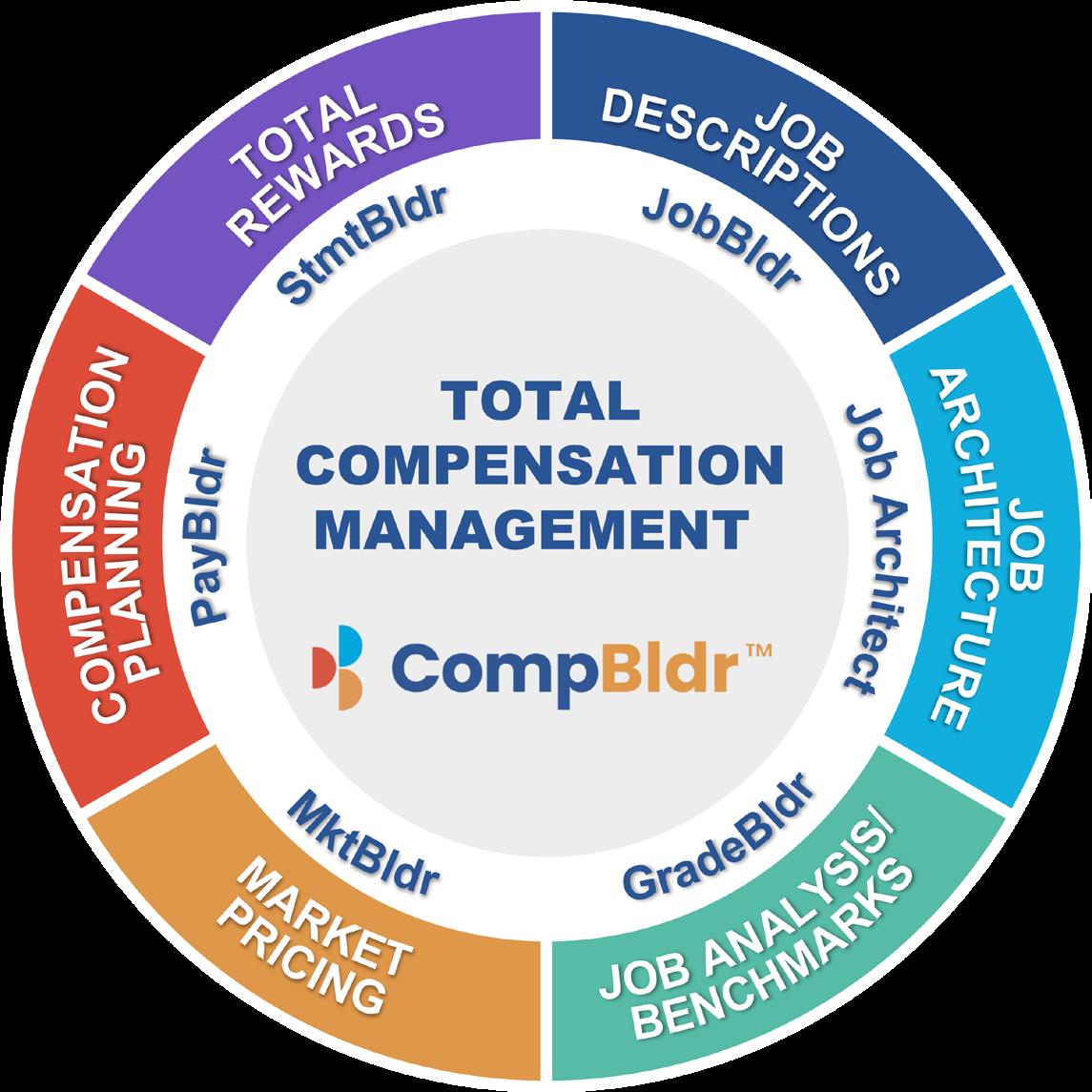
• Job evaluation architecture with point factor grading
• Automated job value score & pay grade
• Identification of inequities for compliance adjustment
MktBldr™
Understand Competitive Market Pay
• Market surveys & compensation benchmarking
• Multi-factor pay variant analysis
• Pay trends
PayBldr™
Model & Evaluate Pay Options
• Create, edit & evaluate compensation structures
• Identify internal pay inequities and required adjustments
• Model pay impact on budgets
StmtBldr™
Total Rewards Framework
• Total Reward data & Employee Annual Statements
• Increase pay transparency for employee’s total compensation package
• Improve understanding of the value of targeted benefits to enhance employee engagement

Today, background screening isn’t an issue of “if” but “how. Most companies see the value background checks provide and conduct some form of background screening before hiring new employees. Verifying work and education history, checking criminal records, and reviewing motor vehicle records all help HR make informed hiring decisions.
However, without a well-structured process, background screening can quickly become a costly, time-consuming, unproductive headache. Inefficiencies in the screening process can lead to delays in hiring, compliance risks, and even bad hires slipping through the cracks. Here’s how to streamline your approach and get the most efficiency out of your background screening process.
Since the background check is an essential part of your hiring process, it needs to perform smoothly. Here are five common issues that can slow things down and increase costs.
• Manual processes. Keeping up with emails and phone calls to verify candidate information, looking at social media profiles, and trying to find educational institution phone numbers for verifications can slow you down. These waste time and increase the risk of human error. Un-auditable manual tasks can also cause compliance issues.
• Unclear screening criteria. A vague or inconsistent screening policy can cause confusion, redundant requests, and unnecessary delays. Teams that are misaligned on what checks are needed for each role waste time (and money) running unnecessary screenings. Worse yet, they may overlook critical information.
• Missing front-end verifications. Failing to verify a candidate’s identity at the start of the hiring process can waste time and resources on background checks that return discrepancies or require further investigation. False positives and negatives can force HR teams to re-run reports or conduct manual follow-ups. Front-end identity verifications can catch potential red flags early.
• Delays in candidate cooperation. Some delays come from the candidates themselves. Clunky, mobile-unfriendly communication channels and hard-to-understand instructions can make them drag their feet on providing necessary information. These obstacles don’t contribute to a positive candidate experience.
• Not integrating with your HR systems. If your background check process operates separately from your applicant tracking system (ATS) or HR software, your team is stuck with extra data entry and process bottlenecks.
1. Define Your Screening Policy and Job-Specific Requirements
For example, a vice-president role will demand different screening criteria than a forklift driver position. Clearly outline the necessary background components needed for different positions. A documented, standardized policy keeps everyone on the same page, makes the process fairer, and eliminates unnecessary screenings.
2. Automate Where Possible
Eliminate manual tasks by leveraging background screening technology. Automation tools can help with compliance tracking, data entry, candidate notifications, and reporting. Look for a background screening provider that offers seamless automation and integrates with your ATS platform.
3. Choose a Reliable Background Screening Provider
Selecting the right background check partner is crucial. Choose a provider with a strong track record of fast (and documented) turnaround times, compliance expertise, and access to comprehensive databases. Your partner should be accredited by the Professional Background Screening Association (PBSA) and SOC 2 Type 2 certified.
Regularly communicate your company’s hiring needs, discuss turnaround times, and provide feedback to refine the process. A responsive provider can help resolve issues quickly, ensure compliance, and offer solutions to streamline your process.
4. Embrace Tech to Communicate Clearly with Candidates
Delays often occur when candidates don’t understand the process or fail to complete the required forms. Using mobile-friendly applications where candidates can upload necessary documents can speed things up significantly. Improve efficiency by sending clear instructions, setting notification reminders, and offering support if they have questions.
5. Implement Front-End Identity Verification
Identity fraud is rampant. Start your screening process by ensuring your candidates are who they say they are. Verify each candidate’s identity before running deeper background checks. Using AI-powered verification tools like Data Facts’ vID can prevent delays caused by mismatched records or fraudulent information.
6. Monitor Turnaround Times and Accuracy
Stay on top of how long your background check turnaround takes. A data-driven approach ensures continuous improvement. Regularly review your background screening process to identify inefficiencies, compliance risks, or outdated procedures. Track average turn times and analyze the accuracy of the reports. If you’re experiencing frequent delays or errors, it might be time to revisit your process, invest in new technology, or switch screening providers.
7. Stay Compliant with Regulations
Employment laws and screening regulations, like the FCRA, vary by state and industry. In addition, laws and regulations regarding hiring often change rapidly. Ensure your background check process follows all relevant legal requirements (for example, make sure you stringently follow Adverse Action requirements). Work with a background screening provider that prioritizes compliance and provides tools to help you stay informed.
Background checks are valuable pieces of information that can help HR make smart hiring decisions. However, you need to take care not to let the process get bogged down. An unwieldy background screening process can create unnecessary delays, drive up costs, and cause candidate communication issues. By recognizing and addressing these inefficiencies, you can take proactive steps to streamline your approach. A well-optimized screening process helps you hire the right people faster and lets your team focus on building a strong and successful workforce.
Data Facts | www.datafacts.com

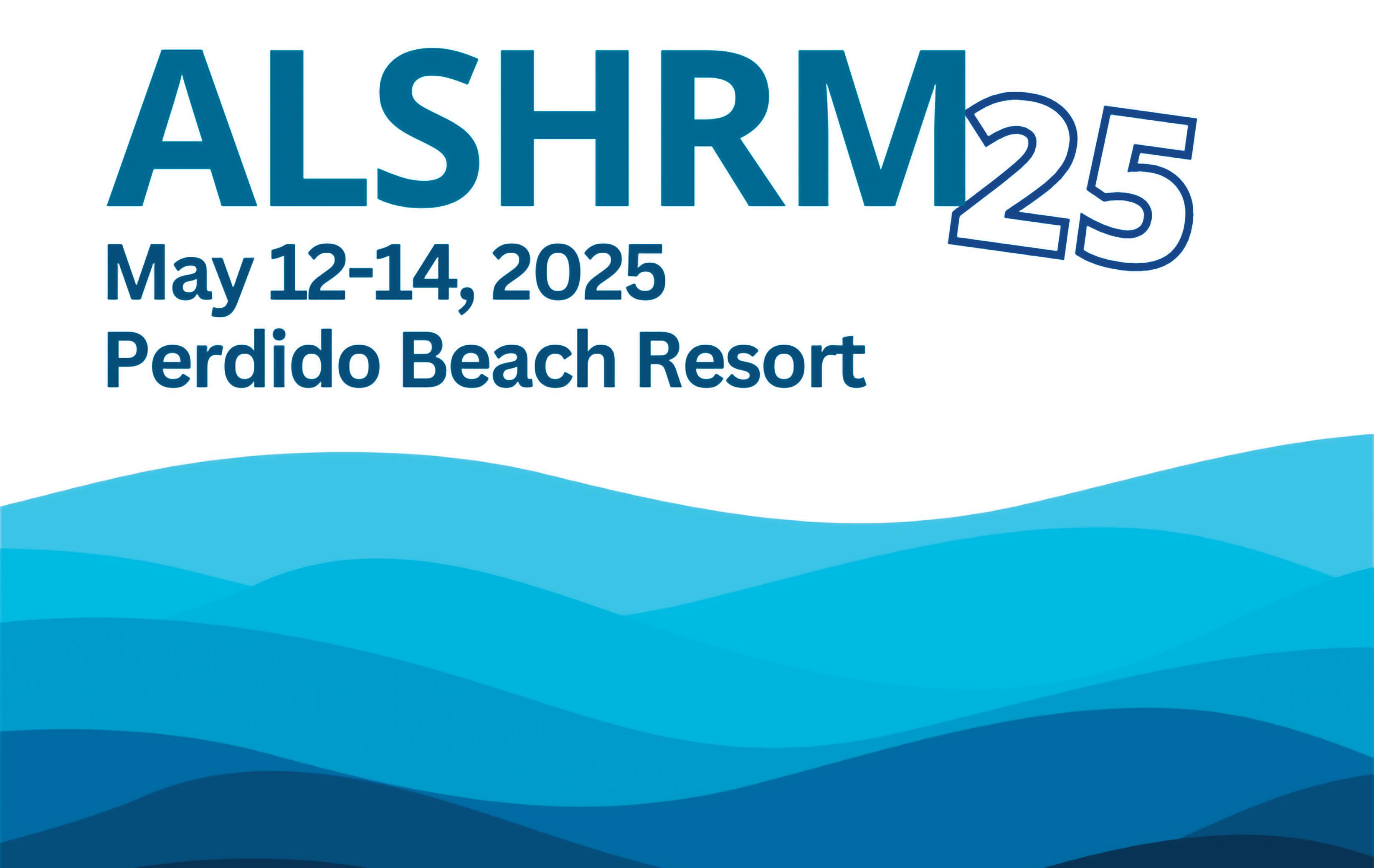
May 12-14,
Perdido Beach Resort, Orange Beach, AL

An organization’s reputation does more than just influence the target market to do business with the company. Many employees or job seekers wouldn’t consider applying or continuing to work for a company with a bad reputation. Both current and former employees can be some of the best brand ambassadors. Therefore, an employer’s brand plays an important role in recruiting and retaining employees, especially in a competitive job market.
This page will outline what employer branding is and why it’s important to an organization.
An employer’s brand refers to the reputation an organization holds among its workforce. It’s what employees consider when they decide to apply or continue working for an organization. This unique brand exists whether it’s managed by the employer or not, so actively monitoring and managing it both internally and externally is critically important. The next sections will go into more detail on the different elements an organization can leverage when managing its brand.
A mission statement is a statement made by an organization that outlines its core beliefs and principles. Simply put, the statement tells employees what the organization stands for, serving as a pledge for the company to live up to those standards. A strong employer brand speaks to the organization’s mission statement by transforming its outlined values and principles into an impactful message.
A mission statement answers the questions of what the organization does, how these actions are accomplished and why the organization does them. It is both an internal- and external-facing statement that should always be visible in the workplace, on digital platforms (e.g., websites and social media channels) and within marketing materials.
Core values are an important part of any organization. Values answer the questions of why the job matters and what the organization stands for. They play a vital role in the hiring process, as the best candidates are those who embody the same values as the organization. Strong, authentic values can benefit an organization by attracting those candidates to apply. In addition, values can help keep employees feeling motivated and engaged, which, in turn, may increase performance and productivity levels.
Some common company values include: Accountability Customer service Innovation Integrity Respect Trust
Values should be demonstrated in daily operations and communications, both internally and externally. Employees who respect and believe in an organization’s values are able to better understand their roles and how they can achieve and contribute to business goals.
Another core element of a strong employer brand an EVP. An EVP is a set of benefits employees receive in return for the unique set of skills and experiences they bring to the company. A strong EVP can give employees a powerful incentive to work for an organization. Additionally, it can aid in attracting and retaining top talent, reducing hiring costs and reengaging the workforce.
When establishing an EVP, an organization should consider what factors influence a person’s decision to accept a job offer or not, such as:
On-the-job perks
Employee benefits
Company values
Company culture
Career development opportunities
Job security capabilities
An EVP is developed and tested with existing employees. It is not only unique, but relevant and compelling. Employees want to work for an organization that values their skills, capabilities and experiences, and a strong EVP accomplishes that.
In a competitive recruitment market, employer branding can be leveraged to promote an organization’s culture and values. It allows an employer to reinforce that their organization is a great place to work, which is critical to securing and retaining the strongest candidates. LinkedIn research found that a strong employer brand reduces employee turnover by 28% and cost per hire by 50%. This means that organizations with negative or nonexistent brands may end up paying more for both recruiting and retaining employees.
If you would like help improving your company’s EVP through a wonderful employee benefits package, call us today. Most of the time we can improve your current offerings while saving premium for the company and the employee.

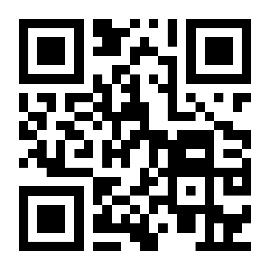
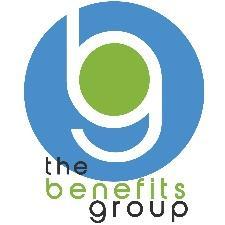

As part of the major shake-ups of the federal government’s enforcement agencies, President Trump made three major changes to the Equal Employment Opportunity Commission (EEOC), all of which will cause a major shift in the political leanings of the EEOC. One of those changes, the firing of EEOC General Counsel Karla Gilbride, was expected. The other changes, the firing of EEOC Commissioners Charlotte Burrows and Jocelyn Samuels, were unexpected and unprecedented.
President Trump’s firing of Gilbride will have the most immediate effect and has been established as within presidential authority. As a result, Gilbride is not expected to challenge her termination. Although her replacement has not yet been named, this action ends her authority over management and coordination of EEOC enforcement litigation, which had been aggressively pursuing various employers and implementing the Biden administration’s agenda nationwide. It is expected that Gilbride’s termination will dramatically alter the EEOC’s enforcement priorities, including which lawsuits are filed by the EEOC and what actions (or inactions) are taken in charge investigations.
President Trump’s firing of Burrows and Samuels, two of the three remaining Democrat EEOC Commissioners, on the other hand, was largely unexpected. This action was unprecedented and may face court challenge(s). Both Commissioners have stated they are exploring legal options. For the time being, Burrows’ and Samuels’ removals leave the five-member board with only two members: Commissioner Andrea Lucas, who President Trump has designated as Acting Chair, and Commissioner Kalpana Kotagal, a President Biden appointee. Since the EEOC no longer has the requisite three-member quorum, the EEOC cannot decide cases. Thus, these terminations prevent the EEOC, which had a majority of three Democrat Commissioners to one Republican Commissioner before President Trump’s actions, from issuing any additional decisions or guidance that could be contrary to President Trump’s agenda. Until President Trump appoints, and the Senate confirms new EEOC Commissioners, the EEOC will remain unable to issue rulings or guidance, absent a successful court challenge that reinstates these Commissioners.
Importantly, upon her appointment as Acting Chair, Lucas issued the following statement:
“Consistent with the President’s Executive Orders and priorities, my priorities will include rooting out unlawful DEI-motivated race and sex discrimination; protecting American workers from anti-American national origin discrimination; defending the biological and binary reality of sex and related rights, including women’s rights to single-sex spaces at work; protecting workers from religious bias and harassment, including antisemitism; and remedying other areas of recent under-enforcement.”
By TIM K. GARRETT & HUNTER K. YOCHES
This statement provides employers with a taste of where the EEOC will focus its enforcement efforts once it has the requisite threemember quorum. Wise employers will remember, however, that many States have their own enforcement agencies, that enforce State anti-discrimination laws, and it is very possible that some (if not many) of those States will continue enforcement efforts similar to those of the Biden EEOC.
If you have any questions about how these changes to the EEOC’s composition and priorities may impact your business, please contact the authors.
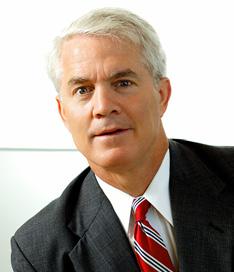
Tim K. Garrett, Member tgarrett@bassberry.com
Tim Garrett helps employers solve complex issues related to all aspects of labor and employment law, providing in depth counseling and developing creative solutions to underlying business issues. He is an experienced trial lawyer, defending employers of all sizes in employment litigation claims across the country. His work has ranged from defending a major university during a significant wage and hour collective action involving thousands of employees to the successful defense of a major healthcare provider in a gender discrimination / retaliation case. In addition, Tim has served as nationwide labor and employment counsel for the largest nonprofit dialysis company in the U.S.

Hunter K. Yoches,
Associate hunter.yoches@bassberry.com
Hunter Yoches represents management in all aspects of labor and employment law and related litigation. He regularly defends employers against various claims and counsels clients on a wide range of day-to-day employment matters. Hunter has experience litigating cases and counseling clients regarding federal and state employment laws, including collective and class action litigation, contract disputes, and compliance issues. He advises clients related to wage and hour laws (such as the Fair Labor Standards Act), discrimination laws (such as the Americans with Disabilities Act, Age Discrimination in Employment Act, Family and Medical Leave Act, Title VII of the Civil Rights Act, and others), unfair labor practices (such as the National Labor Relations Act), and more, helping employers remain compliant with the constantly changing laws and regulations that impact the workplace.




Presented by MMAGI & McGriff
Presented by MMAGI & McGriff
Presented by MMAGI & McGriff
Tuesday, June 3, 2025, 2:00pm to 5:00pm
Tuesday, June 3, 2025, 2:00pm to 5:00pm
Tuesday, June 3, 2025, 2:00pm to 5:00pm

Malco Ridgeway Cinema Grill & Bar, 5853 Ridgeway Ctr Parkway, Memphis, TN
Malco Ridgeway Cinema Grill & Bar, 5853 Ridgeway Ctr Parkway, Memphis, TN
HIGH ENERGY FORUM - 10 speakers, 5 minutes – slides auto-rotate - topics relevant to the workplace
Malco Ridgeway Cinema Grill & Bar, 5853 Ridgeway Ctr Parkway, Memphis, TN
HIGH ENERGY FORUM - 10 speakers, 5 minutes – slides auto-rotate - topics relevant to the workplace
HIGH ENERGY FORUM - 10 speakers, 5 minutes – slides auto-rotate - topics relevant to the workplace
OFFICIAL MEDIA SPONSOR
OFFICIAL MEDIA SPONSOR
OFFICIAL MEDIA SPONSOR


$5 per ticket sold will be donated to PorterLeath, a Memphis non-profit serving children & families since 1850.
$5 per ticket sold will be donated to PorterLeath, a Memphis non-profit serving children & families since 1850.
$5 per ticket sold will be donated to PorterLeath, a Memphis non-profit serving children & families since 1850.
EARLY BIRD until March 31st
EARLY BIRD until March 31st
EARLY BIRD until March 31st
$25 PER TICKET
$25 PER TICKET
$25 PER TICKET

HR Professionals Magazine is recognized by SHRM to offer Professional Development Credits (PDCs) for SHRM-CP® or SHRM-SCP® recertification activities.
Online classes begin April 23, 2025 and will meet twice per week for 12 weeks on Monday and Wednesday evenings from 6:00 PM to 7:00 PM.

The total cost of the SHRM-CP® | SHRM-SCP® Online Certification Exam Prep Class is $1025 (plus $25.00 shipping)
You may pay by PayPal, credit card or check.
2025 Spring Exam Window May 1, 2025 – July 1, 2025
For more information visit shrmcertification.org
If you do not pass, you can retake the class at no additional charge if you meet these two requirements: – Attend 80% of the scheduled online classes – Score 80% on all practice quizzes
Contact cynthia@hrprosmagazine.com OR visit our website at www.hrprofessionalsmagazine.com
About the instructor:
Cynthia Y. Thompson is Principal and Founder of The Thompson HR Firm, a human resources consulting company in Memphis. She is a senior human resources executive with more than twenty years of human resources experience concentrated in publicly traded companies. She is the Editor | Publisher of HR Professionals Magazine, an HR publication distributed to HR professionals in Alabama, Arkansas, Florida, Georgia, Kentucky, Louisiana, Mississippi, North Carolina, South Carolina, Tennessee, and Texas.
Cynthia has an MBA and is certified as a Senior Professional in Human Resources (SPHR) by the Human Resource Certification Institute and is also certified as a Senior Certified Professional by the Society for Human Resource Management. She is a faculty member of Christian Brothers University. Cynthia was appointed to serve on the Tennessee DOHR Board of Appeals by Gov. Bill Haslam in 2014.
















U.S. workers who regard their HR departments as effective are significantly more likely to exhibit positive workplace behaviors and attitudes.*
Most of these workers say they feel engaged at work, are committed to their organization, and are satisfied with their job — and they’re also less likely to be actively job-hunting. Learn how to design comprehensive talent strategies to attract, engage, and retain top talent at SHRM25!

S AN DIEGO
JUNE 29 – JULY 2, 2025
SEATS ARE FILLING UP FAST. SECURE YOUR SPOT TODAY! shrm.org/shrm25-hrprosapril
*Source: 2025 SHRM State of the Workplace report.